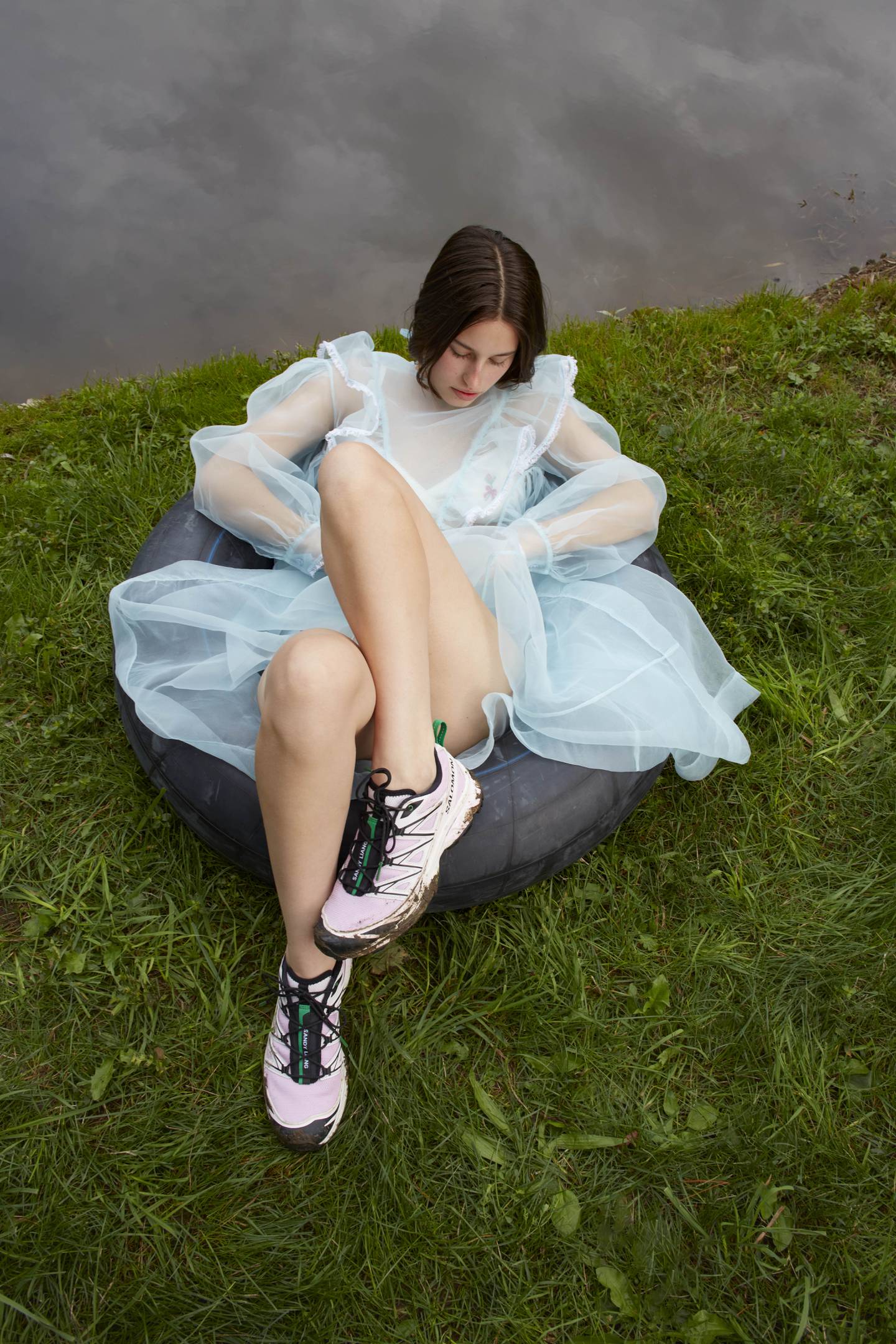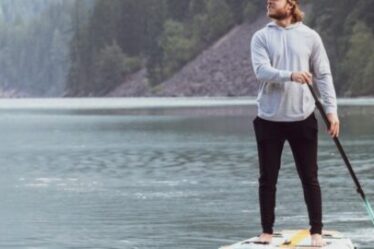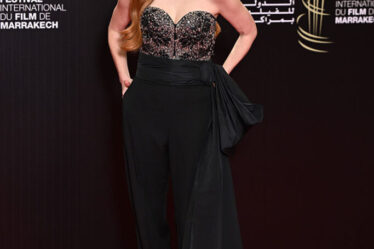
Tyler Jordan had recently moved to Vancouver in the autumn of 1993 and was looking for work when he chanced upon a mysterious handwritten job advert in his local climbing gym: “If you have a tendency to remain positive when shit hits the fan — call this number.”
After putting it off for a week, the biology graduate and avid climber called the number. He spoke to Jeremy Guard, co-founder of a tiny, four-year-old business manufacturing climbing straps called Arc’teryx.
By the following Monday, Jordan was hired.
“My title was administrator, which meant I basically did whatever Jeremy told me to do,” said Jordan. “There was about a dozen of us packed into a tiny office space — from there it was game on, the rest is history.”
Jordan would eventually become CEO in 2005. By then, Arc’teryx had become the go-to brand for cutting-edge mountaineering gear. That same year, it was bought by Amer Sports — a Finnish holding company that presides over a roster of outdoors and sporting goods brands, including tennis racket and basketball manufacturer Wilson — as an afterthought in Amer’s quest to land French ski and trail footwear company Salomon, which was the parent company to Arc’teryx.
When Jordan stepped down in 2012, the Canadian brand was closing in on annual revenue of $200 million. Then, in the latter half of the 2010s, it saw interest and sales soar among fashion consumers, becoming a coveted collaborator and a poster brand for the gorpcore trend, in which outdoor apparel like technical jackets and hiking boots have become stylish everyday pieces.
After Amer Sports was acquired by a consortium led by China sportswear giant Anta in 2019, the new ownership mapped out an ambitious growth plan.
The goal for each of the three brands is to reach €1 billion ($1.1 billion) in annual sales, and for the group to reach €5 billion in total revenue, up from €3.4 million in 2022, according to Anta’s earnings report in March. It didn’t specify a timeframe, but said it was “making steady progress”.
Looking to capitalise on this momentum, Anta and its co-investors held preliminary talks with investment banks in December to explore an IPO of Amer Sports, which could raise as much as $1 billion, according to a report by Bloomberg.
Anta has overhauled Amer Sports’ centralised approach to operating the portfolio, instead allowing each brand to be more autonomous. The retailer also wants to strengthen the brands’ apparel assortment and shift away from wholesale to prioritise direct-to-consumer sales.
While trends like gorpcore will inevitably rise and fade, demand for performance apparel was driven by permanent lifestyle changes following the pandemic, and brands like Arc’teryx and Salomon are particularly well-positioned to succeed. Arc’teryx, for example, has been adopted by unlikely consumer groups, with its gilets and shell jackets becoming the uniform of the Silicon Valley tech bro crowd (the brand even opened a store there in 2021).
“Not all brands will survive the end of the gorpcore cycle, but the likes of Arc’teryx and Salomon have never attached themselves to it or adapted their core products,” said Clayton Chambers, a sportswear and menswear journalist. “Rather, [they’ve positioned] their businesses more as luxury offerings, both in terms of price point and collaborations.”
The Deal That Almost Didn’t Happen
By 2000, Arc’teryx had expanded into apparel and scaled considerably — posting revenues of 30 million CAD ($22 million) that year — and in 2002 was acquired by the joint Adidas-Salomon group.
Three years later, Adidas divested the Salomon business — along with its subsidiary Arc’teryx — for €485 million ($537 million) to Amer Sports. Adidas had pivoted to focus solely on ball sports, and Amer wanted to build a roster of leading sports equipment businesses. Also in its portfolio is Swedish outerwear label Peak Performance, ski equipment specialists Atomic and Armada, as well as Louisville Slugger, a 140-year-old baseball bat manufacturer.
But Arc’teryx almost didn’t make it in as part of the deal, according to Jordan.
“When Amer acquired Salomon, they didn’t know all that much about Arc’teryx — they were only interested in sporting equipment companies and definitely had no interest in apparel or soft goods at the time,” he told BoF.
After another decade of rapid growth for both brands, Amer Sports was acquired in late 2018 for $5.2 billion by a consortium of buyers led by Anta Sports, China’s largest sportswear company, and also includes Tencent, private equity firm Fountain Vest Partners and Lululemon founder Chip Wilson.
Anta’s Plan
Scaling Amer’s operations first required an overhaul of its previous centralised approach, in which brand leaders spent more time working with Amer and its board rather than on day-to-day decision-making for their brands, said Jordan. The new ownership brought on a new slate of executives, installing then-Anta president Jie Zheng as Amer’s chief executive. Zheng then tapped former Lululemon executive Stuart Haselden to lead Arc’teryx, and Franco Fogliato, a Colombia and VF Corp. alum, to head up Salomon.
They were tasked with two major objectives: increase the share of direct-to-consumer sales and lean into the favourable fashion cycle by expanding apparel offerings.
“When the new shareholders came on board in 2019, they made a lot of changes in the brand’s direct-to-consumer focus, which are working very well in terms of letting the brand be more independent and more agile,” said Fogliato.
Arcteryx, for instance, is reducing wholesale exposure from accounting for 66 percent of sales in 2019 to 25 percent by the end of 2023. Retail expansion has also been “an incredibly important part of the strategy, with the brand growing its global network of 120 stores with new locations in North America and Asia over the past two years and targeting Europe next, said Haselden.
Anta’s changes have yielded promising results, according to Amer chief financial officer Andrew Page. Amer’s revenue of €3.4 billion in 2022 reflected a 22 percent increase from the year before, he said. EBITDA also increased by 8.8 percent to RMB 2.58 billion ($373 million) in the same period, per Anta’s annual report.
Conquering Fashion
All three brands are investing in introducing fashion-forward apparel, which carry some of the same technical credentials as their sport-focussed products.
For Arc’teryx, the key is to drive apparel sales without diluting core performance products like its Gore-Tex parka jackets, thermal base layers and hiking trousers. To do so, the brand launched a sub-label called Veilance, a collection of trendy, minimal pieces, including down jackets, wool blazers and trousers, as well as accessories like bucket hats and backpacks.
The commitment to apparel may require the heaviest effort from Wilson, which for decades has focussed on sports equipment rather than sportswear. Apparel currently accounts for a tiny segment of the business now, including tennis tops and shirts and tracksuits, according to Amanda Lamb, vice president of Wilson. But the brand has begun introducing more non-performance apparel, like a $150 basketball varsity jacket. It’s also pursuing high-profile fashion collaborations such as an apparel capsule with Kith, as well as a Louis Vuitton basketball it created with the late Virgil Abloh for the NBA Finals in 2021.
Wilson is looking to build out its retail footprint, opening new stores across the US and China, including a New York flagship and an outpost in the Santa Monica promenade, which opened last weekend.
At Salomon, Fogliato’s key objective is to make the brand’s apparel “a more premium offering,” he said. The brand’s sport-style product range — which includes its ubiquitous XT-6 — is one of its fastest-growing categories, having been boosted by an endless list of celebrities and collaborations with luxury and streetwear players.
For Fogliato, Salomon’s progress under the new Amer ownership was perfectly demonstrated in February when Rihanna performed the Super Bowl halftime show wearing a pair of the MM6 Maison Margiela x Salomon Cross Low sneakers. Earlier that day, several of the brand’s athletes using Salomon gear won gold medals at the cross-country skiing and biathlon World Cup — the same sport that Salomon designed equipment for when it began in 1947 as a family-owned business in the French Alps.
“I don’t think there’s many brands at all in the world who can have such credibility in both fashion and performance sport at the same time,” Fogliato said.



